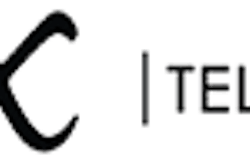 From left to right: Tom Balzer, Ohio Trucking Association; Kary Schaefer, Daimler Trucks North America; Mike Cammisa, American Trucking Associations, and; Rob Penner, Bison Transport/TCA chairman
From left to right: Tom Balzer, Ohio Trucking Association; Kary Schaefer, Daimler Trucks North America; Mike Cammisa, American Trucking Associations, and; Rob Penner, Bison Transport/TCA chairmanThe building blocks for autonomous vehicles are on the road today in the form of existing safety systems and advanced driver assistance systems, but it could take at least 50 years before Level 5 (fully autonomous) trucks are a reality.
Kary Schaefer, general manager of marketing & strategy for Daimler Trucks North America, said the Freightliner Inspiration truck unveiled in 2015 is a Level 3 autonomous vehicle where the vehicle and driver can cede control to each other in certain operations but the driver must remain in the driver’s seat.
“It is a pretty set defined driving task – stay in your lanes, don’t hit any cars in front of you,” said Schaefer, a panelist for the Autonomous and Assisted Vehicles discussion at the Truckload Carriers Association’s 79th Annual Convention in Nashville, Tenn. “When you introduce other driving conditions such as road markings, traffic congestion, exit ramps, lane changing, those driving tasks have yet to be demonstrated but that is something everyone is working on.”
Tom Balzer, president and CEO of the Ohio Trucking Association, said the public perception vs. the reality of where autonomous vehicle development is today is a serious issue.
“The reality is we are in the infancy in this thing and the belief by the media and the general public is tomorrow there could be a truck without a driver on the road,” said Balzer. “Look at the Otto truck demonstration, they actually ran that course a thousand times before they did that one run.”
One challenge to autonomous vehicle adoption is uneven development in transportation legislation at the state level as the technology continues to evolve.
“[Autonomous vehicle] technology is developing a lot of different ways in a lot of different places,” said Mike Cammisa, vice president of safety & connectivity for the American Trucking Associations. “The challenge for us is we are used to the federal government regulating the equipment and right now it is a little early for people to know how to regulate automation. We are trying to keep it at the federal level, but states have a role to play as well.”
“From the state perspective, we are trying to find a strategy so that we don’t have this patchwork of regulation that goes on in all these different states but as state executives is how we come up with an overall approach to make sure we don’t stifle innovation with a variety of regulatory environments,” added Balzer.
Cammisa cited one example of state cooperation in the Midwest where Ohio, Pennsylvania and Michigan have formed the Smartbelt Coalition to collaborate and develop a corridor that can be used for testing and deployment of some automated technologies.
Without such cooperation or federal-level policy, autonomous vehicle technology is threatened.
“If we don’t have the consistency [between states] we won’t be implementing these technologies,” added Schaefer.
Aside from disparity in regulatory and legislative issues, truck manufacturers and technology companies all are taking different approaches, requiring common standards in the future for autonomous vehicles to work in vehicle-to-vehicle and vehicle-to-infrastructure networks.
“The automotive industry is leading this, and there are radio frequencies set aside for V2V communications and I think truck companies will follow,” said Schaefer.
Panel moderator Rob Penner, CEO of Bison Transport and incoming TCA chairman, said he fields numerous questions from drivers worried about autonomous vehicles threatening their jobs.
“Everyone is trying to figure out how you remove the driver from the equation, and I think the focus for the industry should be how do you move goods from point A to point B as safely, efficiently and reliably as possible,” said Schaefer. “If you understand that and how it fits into your business model, that’s when you can start taking advantage of some of the developments are happening.”
“The driver has a lot of different activities that he takes care of during the day and those things aren’t going away,” added Cammisa.
Penner also asked the panel about working with fleets to determine the practicality and daily use case for autonomous vehicles in trucking.
“In the passenger car industry, you buy the vehicle you want with all the bells and whistles,” said Cammisa. “In the trucking world, you’re not going to pay for cool technology just to say you have it, it has to provide value to business. [Autonomous development] can’t just be technology for technology’s sake, it has to make sense for the business model.”
The most important thing we can do is to work with customers on how to operationalize these technologies in the fleet,” said Schaefer.
“If we gain efficiencies through platooning or autonomous vehicles and we lose all that efficiency in detention time, your ROI quickly deflates,” added Balzer.










